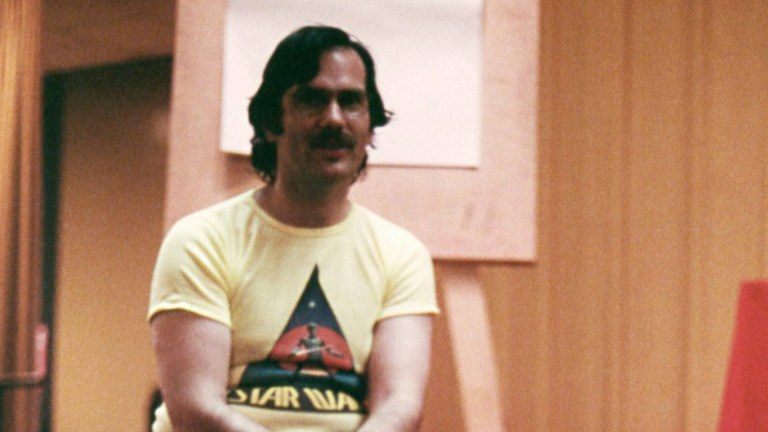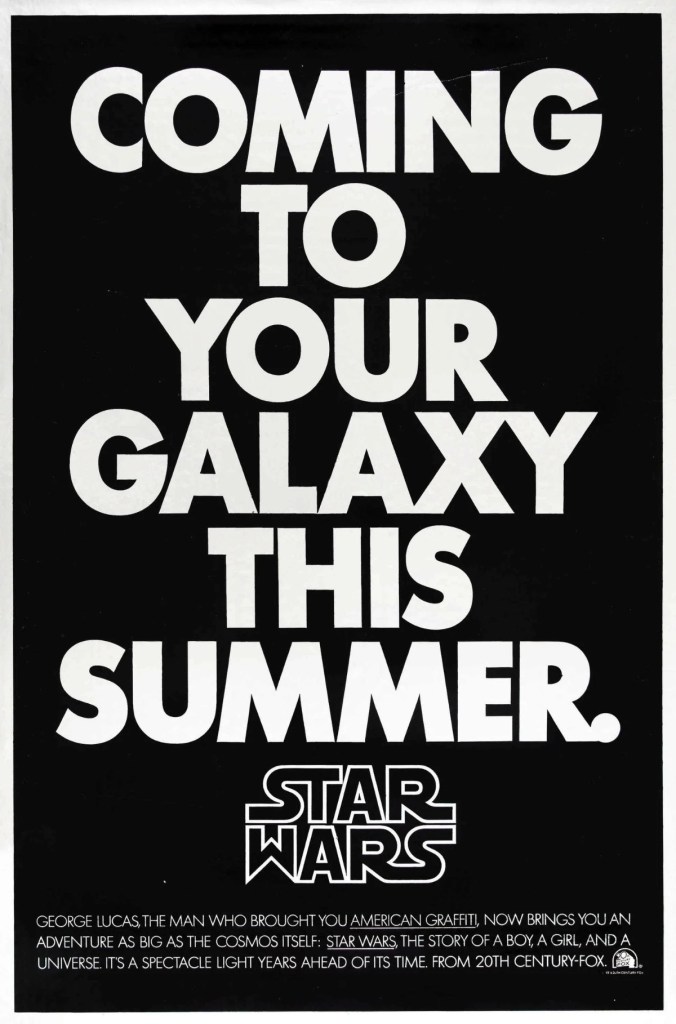How Star Wars Hypeman Charles Lippincott Changed Fandom Forever
Back in 1976, George Lucas was hard at work on a masterpiece. But without a brilliant publicist like Charles Lippincott, nobody would have gone to see Star Wars.

Blockbuster movies, as we think of them now, were defined in the ‘70s. Arguably, the first Hollywood blockbuster was Jaws, but the first blockbuster that was strategically planned was Star Wars.
Have you ever asked yourself why countless people lined up to see Star Wars in 1977 on the day it came out? There was no internet and TV advertising was expensive. George Lucas was not yet a multi-billionaire. How did they do it? How did Star Wars find its audience? More importantly, how did Star Wars find its audience before it became a massive hit?
The answer is the late Charles Lippincott. Lippincott, who died this week at the age of 80, was a publicist who worked for Lucasfilm in 1976. Most famously, he was also the guy who secured merchandising tie-in deals with Marvel Comics and Kenner toys. If you’ve ever read a Star Wars comic or played with a Star Wars toy, you have Lippincott to thank.
But that’s all the stuff that came later. What came before is perhaps the most interesting thing about Lippincott’s contribution to the success of Star Wars — he hit the road and promoted the movie where it mattered: conventions. With a slideshow of stills from the film and those slick black and white posters that said, “Star Wars: Coming to Your Galaxy This Summer,” Lippincott got the hardcore science fiction and fantasy fanbase totally invested in seeing Star Wars. Had he not done this, Star Wars may not have succeeded.
Stream your Star Wars favorites on Disney+ with a FREE TRIAL, on us!

In addition to running promotions for the movie on college radio stations, there were three conventions essential in Lippincott’s plan on getting the word out to existing science fiction and fantasy fans: Westercon in July 1976 in Los Angeles, San Diego Comic-Con that same month, and, perhaps most boldly, Worldcon in September of 1976. This last one featured Mark Hamill, producer Gary Kurtz, and Lippincott, taking the stage to sell Star Wars to the literary wing of the SFF establishment. Just so we’re clear, Worldcon is the name of the convention that hosts the Hugos, the most coveted bookish science fiction and fantasy award of all time.
Essentially, Lippincott took a big, brash space opera, and put it in front of a crowd, who, on some level, could have seen Star Wars as a derivative of science fiction that had gone out of style in the 40s. And if you watch Lippincott engage with the audience at Worldcon in video footage from 1976, you can hear him actually deflect a question from a straight-up sexist fan who was hoping that Star Wars would look a little more like “the old Amazing covers,” meaning scantily clad women.
“We aren’t sexually selling females or males in this film,” Lippincott responded stoically. Check out the footage of the legendary Worldcon panel below:
Just like aspects of fandom gatekeeping today, the older SFF fans in 1976 were suspicious and cagey about Star Wars. When you watch Lippincott, Kurtz, and Hamill field questions on stage, you see Kurtz getting really defensive. He doesn’t really understand this kind of crowd. Lippincott on the other hand is grinning. He sees the SFF fandom has been riled up. He can see the old guard is already pissed off and he’s giddy. He was a geek, too. And because of that, he was keenly aware that if some aspects of nerdom were already giving you shit about your movie before it came out, that was a pretty good sign.
In the end, it didn’t really matter what some older fans thought of Star Wars before it came out. What mattered is that they and the younger fans knew about it. Lippincott didn’t care about mainstream coverage for Star Wars. He made sure colleges were targeted, and he knew that, combined with the word-of-mouth from the science fiction/fantasy community, would be enough. These days, it’s easy to get nostalgic about this. But at the time, like Star Wars itself, it was actually innovative.
Today, whether it’s Doctor Who or a Marvel movie or the next DC epic, studios wouldn’t dream of releasing genre projects without first promoting them at conventions like San Diego Comic-Con. And Lippincott’s Star Wars strategy helped usher in this method of marketing to fans. Disney’s huge D23 event has a fantastic following and the frenzy it creates is immeasurable. Even indie festivals like SXSW have become signal-boosters of contemporary genre films in a way that feels correlative with what Lippincott was doing by hitting up the conventions of 1976.
When we think of how Star Wars changed the marketplace for movies, we tend to talk about the merchandising (which was also Lippincott’s initiative). But, when we bring the conversation to a simple question: “How do you get people to get excited about a movie?” Lippincott’s more profound (and slightly less cynical) impact on the movie business is clear. And, as someone who is able to write these words on Den of Geek right now, the proof of this impact is self-evident. If Lippincott hadn’t taken Star Wars to the cons, none of us would be having any of these conversations. Period.
When I interviewed Lippincott back in 2015, just before the release of The Force Awakens, he refreshingly denied the idea that Star Wars was marketed as a nostalgic movie. Lucas may have thought of the film that way — a throwback to Buck Rogers and Flash Gordon — but that is not the film that Lippincott sold to audiences.
“We didn’t see it as a nostalgic movie,” Lippincott said. “I was trying to get people to see Star Wars.”

